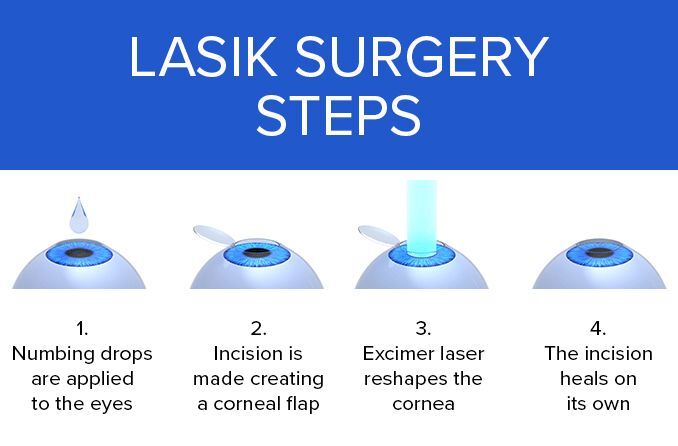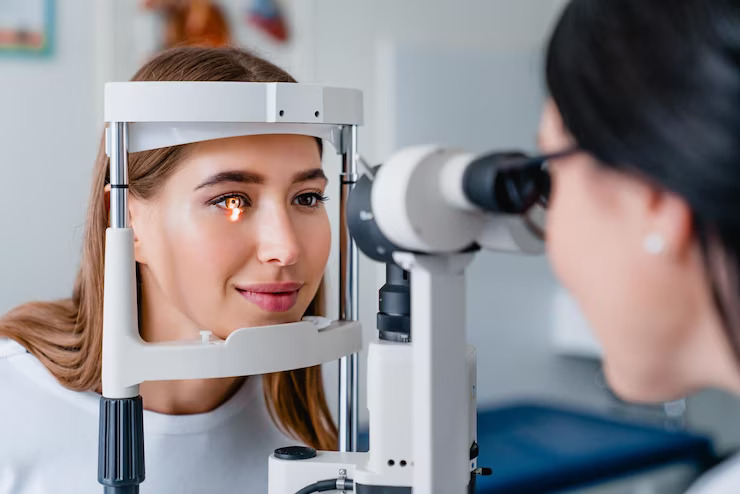Potential Risks Of LASIK Surgery: What You Need To Know
LASIK (Laser-Assisted in Situ Keratomileusis) surgery has become a popular and effective option for correcting vision problems such as nearsightedness, farsightedness, and astigmatism. While LASIK is generally considered safe and boasts high success rates, like any surgical procedure, it carries potential risks and complications. Understanding these risks is crucial for individuals considering LASIK surgery to make informed decisions about their eye care.
Understanding LASIK Surgery
LASIK surgery involves reshaping the cornea, the transparent front part of the eye, to improve vision by using a laser to remove microscopic amounts of corneal tissue. This reshaping corrects refractive errors, allowing light to focus properly on the retina for clearer vision. LASIK is typically performed on an outpatient basis and is known for its quick recovery time and high patient satisfaction rates.
Potential Risks and Complications
While LASIK is generally safe and effective, it’s essential to be aware of potential risks and complications that can arise, including:
- Dry Eyes: One of the most common side effects of LASIK surgery is dry eyes, which can occur due to decreased tear production or altered tear film quality. Symptoms may include dryness, itching, burning, and sensitivity to light. In most cases, dry eye symptoms are temporary and can be managed with lubricating eye drops, but for some individuals, they may persist long-term.
- Undercorrection or Overcorrection: While LASIK aims to correct refractive errors, there is a possibility of under-correction (where vision is not fully corrected) or overcorrection (where too much corneal tissue is removed). This can result in residual vision problems such as blurry vision, glare, or halos around lights, which may require additional treatment or enhancements.
- Visual Disturbances: Some patients may experience visual disturbances such as glare, halos, starbursts, or double vision, especially at night or in low-light conditions. These symptoms are usually temporary but can persist in some cases, affecting visual quality.
- Flap Complications: LASIK involves creating a thin flap in the cornea to access the underlying tissue for laser treatment. While flap complications are rare, they can include flap dislocation, incomplete flap healing, or epithelial ingrowth (growth of corneal cells under the flap), which may require further intervention or surgery to resolve.
- Infection: As with any surgical procedure, there is a risk of infection following LASIK surgery, although it is rare. Proper preoperative preparation, sterile surgical techniques, and postoperative care can help minimize this risk.
- Corneal Ectasia: Corneal ectasia is a rare but serious complication characterized by progressive thinning and bulging of the cornea, leading to distorted vision. It can occur when too much corneal tissue is removed during LASIK surgery, compromising the structural integrity of the cornea. Patients with preexisting risk factors such as thin corneas or high degrees of refractive error are at higher risk of developing corneal ectasia.
- Loss of Best-Corrected Visual Acuity: In rare cases, LASIK surgery may result in a loss of best-corrected visual acuity, meaning that even with glasses or contact lenses, vision cannot be fully corrected to its preoperative level. This can be a challenging complication to manage and may significantly impact quality of life.
- Other Complications: Less common complications of LASIK surgery include inflammation, regression (loss of initial correction over time), and induced astigmatism (irregular curvature of the cornea). While these complications are relatively rare, they underscore the importance of thorough preoperative evaluation and careful surgical planning.
Reducing Risks and Maximizing Safety
While the potential risks of LASIK surgery exist, many can be minimized through careful patient selection, thorough preoperative evaluation, meticulous surgical technique, and appropriate postoperative care. To reduce the likelihood of complications, individuals considering LASIK surgery should:
- Undergo a comprehensive eye examination and consultation with a qualified ophthalmologist to determine candidacy for LASIK and discuss potential risks and benefits.
- Choose an experienced and reputable LASIK surgeon who uses advanced technology and follows strict safety protocols.
- Follow all preoperative instructions provided by the surgeon, including discontinuing contact lens wear before surgery and avoiding certain medications that may affect healing.
- Communicate openly with the surgeon about any concerns or questions regarding the procedure, recovery, or potential complications.
- Adhere to postoperative care instructions, including using prescribed eye drops, attending follow-up appointments, and avoiding activities that may increase the risk of complications, such as rubbing the eyes or exposing them to irritants.
Conclusion
LASIK surgery offers many benefits in terms of vision correction and improved quality of life for millions of people worldwide. However, it’s essential to approach LASIK with realistic expectations and awareness of potential risks and complications. By understanding these risks and working closely with a qualified LASIK surgeon, individuals can make informed decisions about their eye care and maximize the likelihood of a safe and successful outcome.
For any further queries, Plz visit drvivekgarg.in








